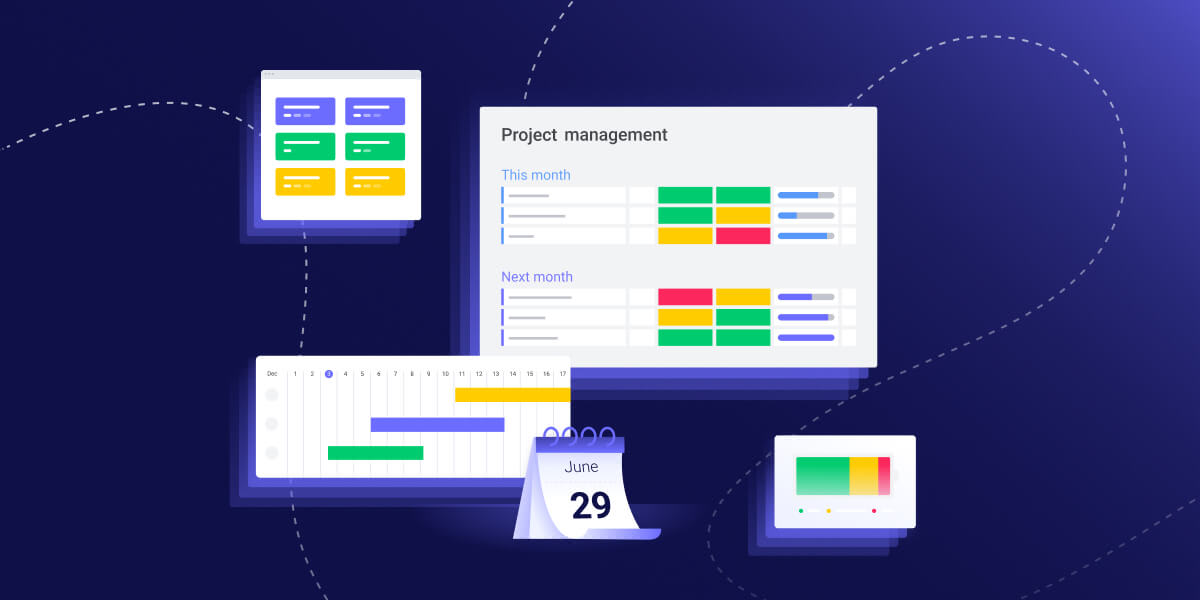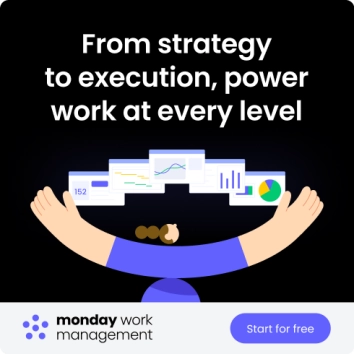Project management is a long game, and it can take time to see results. But what if you could test a big idea on a small scale before committing your team’s valuable time and resources? That’s where a pilot project comes in. It’s your secret weapon for managing risk, identifying potential issues, and gathering real-world data before you go all-in.
For example, imagine launching a new product in an untested market. A well-run pilot project can help you address key challenges like resource allocation, product-market fit, and customer feedback before a full-scale rollout. It’s about making smarter, data-driven decisions from the start.
So, what exactly is a pilot project, and how do you run one successfully? This guide will walk you through everything you need to know. We’ll show you how a Work OS like monday.com can help you manage and collaborate on your pilot projects with total clarity and confidence.
TL;DR: A pilot project is a small-scale trial of a new idea, product, or process conducted in a controlled environment to test its feasibility, manage risks, and gather data before a full-scale launch. It helps organizations make informed decisions by providing practical insights into potential challenges and outcomes.
What is a pilot project?
A pilot project is a small-scale preliminary study conducted to evaluate feasibility, time, cost, and potential risks of a project before a full-scale launch. Businesses use pilot projects for everything from testing new B2B software releases and soft-launching new products to trialing new internal processes, like a four-day work week.
By confirming viability and scalability, a pilot project allows you to test and refine your processes and procedures in a low-risk environment. This approach is valuable across various industries.
- B2B SaaS: Testing a new product feature with a limited group of customers to gather feedback before a company-wide release.
- Financial Services: A FinTech company might run a pilot project to test a new mobile app feature with a select group of users before making it available to everyone.
- Data agency: A data management agency could test a new AI tool on a small subset of customer data to check for algorithmic bias before applying it to a larger dataset.
Pilot project vs. proof of concept (PoC) vs. prototype: What’s the difference?
It’s easy to confuse a pilot project with a proof of concept or a prototype, but they serve different purposes. Understanding the distinction is key to choosing the right approach for your goals.
| Aspect | Pilot Project | Proof of Concept (PoC) | Prototype |
|---|---|---|---|
| Purpose | To test a nearly complete solution with a limited group of real users in a live environment. | To verify if a single concept or theory is technically feasible. | To create a working model of a product to explore its design, usability, and functionality. |
| Scope | Narrow but deep. Focuses on the end-to-end process with real-world variables. | Very narrow. Focuses on a specific function or technical question. | Broad but shallow. Focuses on user interaction and visual design, not backend functionality. |
| Audience | A select group of end-users who represent the target market. | Internal technical teams, developers, and stakeholders. | Designers, developers, stakeholders, and user testing groups. |
| Outcome | Data on performance, user adoption, scalability, and ROI to make a go/no-go decision. | A simple yes/no answer: “Can this be done?” | A tangible model that helps refine the final product’s look and feel. |
Why run a pilot project? The key benefits
A pilot project is more than just a test run; it’s a strategic tool for making smarter business decisions. By investing a small amount of resources upfront, you can save a significant amount of time and money down the line. Here are the key benefits:
- Effective risk mitigation: Identify and address potential issues, bugs, and roadblocks in a controlled setting before they impact your entire customer base or budget. This helps you manage project risk proactively.
- Improved resource optimization: Get a realistic understanding of the time, budget, and personnel required for a full-scale launch. This allows for better resource optimization and prevents unexpected costs.
- Stronger stakeholder buy-in: Presenting concrete data and positive results from a pilot project makes it much easier to get approval and support from key stakeholders for the larger initiative.
- Data-driven decision-making: Move from assumptions to evidence. A pilot project provides valuable quantitative and qualitative data to help you decide whether to proceed, pivot, or pause the project.
How to run a successful pilot project in 6 steps
Now that you know the ‘what’ and ‘why,’ it’s time for the ‘how.’ A structured approach is essential for a successful pilot project. Here’s a simple six-step process you can follow on a platform like monday.com.
Step 1: Define clear goals and success criteria
Before you start, you need to know what success looks like. What specific question are you trying to answer with this pilot project? Your goals should be SMART (Specific, Measurable, Achievable, Relevant, and Time-bound).
For example:
- Test the viability of 50% of the workforce working from home for one quarter.
- Reduce customer churn by 5% during Q3 by implementing a new online checkout process for a select group of users.
- Increase sales by 25% by testing new order management software in one regional office for Q2.
On monday.com, you can set up a high-level board to track these goals and assign owners to each one, ensuring everyone is aligned from day one.
Step 2: Select the right participants and team
The participants in your pilot should be a representative sample of your target audience. For an internal process, this might be a specific department. For a new product, it could be a segment of your customer base.
You also need a dedicated project team. Clearly define roles and responsibilities so everyone knows what they’re accountable for. Use the Workload widget on monday.com to ensure tasks are distributed evenly and no one is overburdened.
Step 3: Develop a detailed project plan
A solid plan is the cornerstone of any successful project. Break down the pilot into phases, tasks, and milestones. You can start with a pre-built planning template on monday.com to get a head start. If you’re feeling stuck, you can even use monday AI to generate a list of initial tasks based on your project goals.
Your plan should include:
- A clear timeline: Set deadlines for each task and milestone. The Timeline View on monday.com gives everyone a visual overview of the entire project’s timeline.
- Task assignments: Assign each task to a specific team member. On monday.com, you can tag team members directly on tasks and in monday workdocs to keep communication centralized.
- Resource allocation: Outline the budget, tools, and people needed for the project.
Step 4: Execute and gather feedback
With your plan in place, it’s time to launch the pilot. As the project runs, it’s crucial to monitor progress and gather feedback continuously. Set up regular check-ins with your team and participants.
Use monday.com Forms to create simple surveys for collecting qualitative feedback from participants. You can also set up Automations to send notifications when tasks are completed or deadlines are approaching, keeping everyone on track without manual follow-ups. All feedback and updates can be centralized in the Updates Section of each task item.
Step 5: Analyze results and report findings
Once the pilot project is complete, it’s time to analyze the data. Compare your results against the success criteria you defined in step one. Use monday.com Dashboards to visualize key metrics and track performance in real-time. You can even use AI to summarize large volumes of text-based feedback to quickly identify common themes.
Your analysis should help you answer key questions: Did you meet your goals? What went well? What were the major roadblocks?
Step 6: Make a data-driven decision
Finally, compile your findings into a comprehensive report. This report should include a clear recommendation: should the project be rolled out on a larger scale, does it need modifications, or should it be discontinued? Share this report with all stakeholders to make a final, informed decision. Following these steps will help your projects go ahead like clockwork.
How to measure the success of your pilot project
Measuring success isn’t just about whether the project ‘worked.’ It’s about gathering the right data to make an informed decision. A balanced approach combines both quantitative and qualitative metrics.
- Define your Key Performance Indicators (KPIs): Before you begin, establish the specific metrics that will define success. These could be user adoption rates, task completion times, cost savings, or customer satisfaction scores. Track these KPIs in real-time using customizable Dashboards on monday.com.
- Gather qualitative feedback: Numbers don’t tell the whole story. Use surveys, interviews, and feedback sessions to understand the user experience. What did participants like? What frustrated them? monday.com Forms are perfect for collecting this feedback in a structured way.
- Analyze quantitative data: Look at the hard data. Did the new process reduce errors by the targeted 10%? Did the new feature increase engagement by 15%? This data provides objective evidence of the pilot’s impact.
Common pilot project challenges (and how to solve them)
Even the best-planned pilot projects can face challenges. Here are a few common ones and how to get ahead of them.
- Scope creep: The project’s objectives expand mid-way through, diluting focus and straining resources. Solution: Create a detailed project plan with a clear scope document in monday workdocs. Use a project board to track all requests and get formal approval before adding any new tasks.
- Low user adoption: Participants are reluctant to use the new tool or follow the new process. Solution: Involve participants early in the planning process to build buy-in. Provide clear training and support, and use monday.com to send automated reminders and tips to keep them engaged.
- Stakeholder misalignment: Key decision-makers have different expectations for the pilot’s outcome. Solution: Host a kickoff meeting to align all stakeholders on the project’s goals and success metrics. Use shareable monday.com Dashboards to provide transparent, real-time progress updates to everyone involved.
Streamline your pilot project with monday.com
Running a successful pilot project requires careful planning, clear communication, and robust tracking. A flexible platform like the monday.com Work OS makes the entire process a breeze, giving you the control and visibility you need to succeed.
From tracking progress with visual timelines to collaborating on tasks and analyzing results with powerful dashboards, your whole team will feel guided and confident. You can create a board from scratch or use our ready-to-go project timeline template to customize it to your exact needs.
 Get started
Get started 


